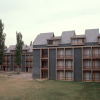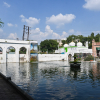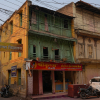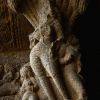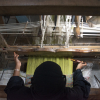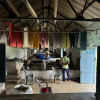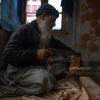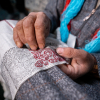Kashmir wa digar hech.
(Kashmir, and nothing else.)
—Emperor Jahangir’s dying words, as recorded in GMD Sufi’s Kashir: A History of Kashmir.
Kashmir, with its rich tapestry of Hindu, Buddhist, Mughal and British influences, stands as a cultural and historical melting pot. The Old City of Srinagar, or Shehr-e-Khas, encapsulates this legacy within its urban and architectural fabric. Known for its ghats, khanqahs (Sufi shrines) and temples, the city has attracted artists, travellers and emperors, who found inspiration in its beauty, particularly the river Jhelum that runs through its heart. This ancient city has preserved the soul of Kashmiri culture and is a testament to the region’s aesthetic and architectural traditions.
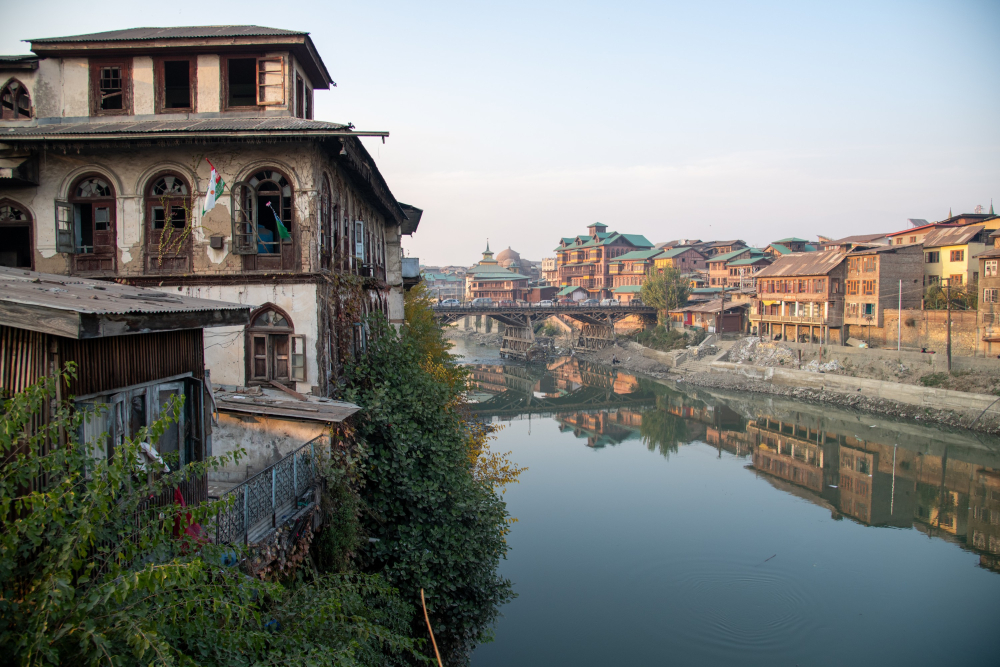
Traditional buildings in the old quarters of Srinagar. (Picture Credits: Syed Muneeb Masoodi)
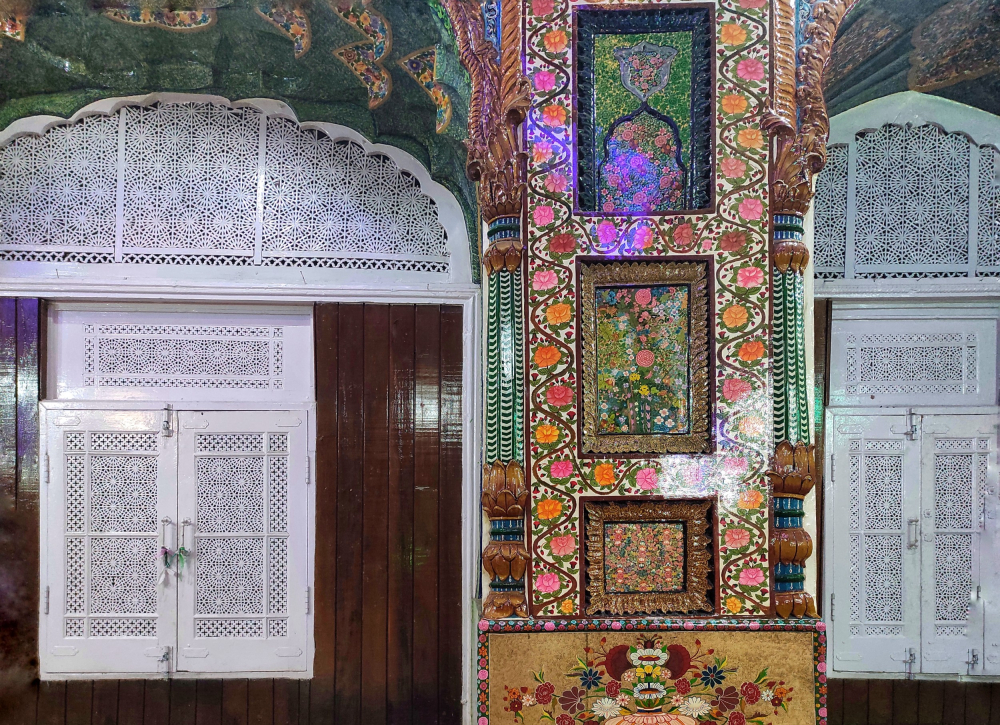
Pinjrakari-style lattice windows and papier-mâché artwork at the Shrine of Sheikh Hamza Makhdoom. (Picture Credits: Wikimedia Commons)
In the shadowed folds of the Himalayas, Old City—or Shehr-e-Khas as it is popularly known—unfolds like a forgotten verse, a city where architecture and memory intertwine like the filigree of its famed pinjrakari (lattice) windows. The buildings in this area are not merely shelter; it is a complex fabric that mirrors the soul of Kashmir, where homes, shrines and street markets speak the language of resilience and grace. It is a city at once expanding and retreating, poised between preservation and erasure, carrying the weight of its past while leaning into an uncertain future. Srinagar’s architecture is poetry, where the city’s walls are less barriers than thresholds, inviting each visitor to step into the heart of Kashmir, to listen to its pulse and to witness the unyielding beauty of a place both transient and timeless.
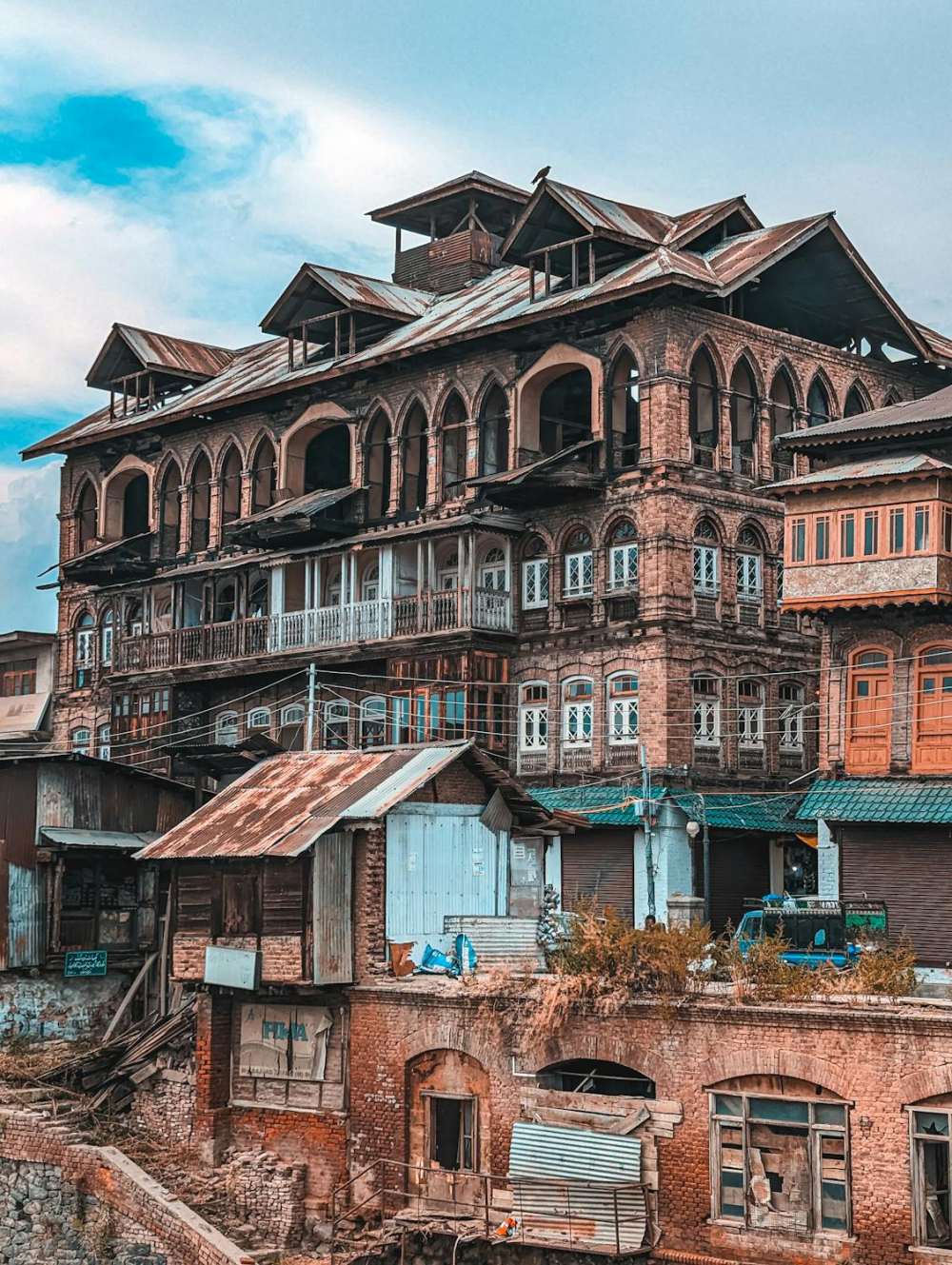
Traditional wooden building in Shehr-e-Khas. (Picture Credits: Umar Andrabi/Pexels)
The Old City is a palimpsest of historical layers, where ancient mosques, shrines and homes coexist with modern interventions. The buildings in Shehr-e-Khas embody vernacular wisdom, passed down through generations. The architectural style incorporates elements of Islamic, Hindu and Central Asian influences, creating a unique aesthetic reflective of Kashmir’s rich historical background. Cultural significance is imbued in every element of design, as it reflects the strong connections between architecture, environment and local craft practices.
Urban Structure and Social Fabric
Srinagar’s Old City grew along the Jhelum River, using its banks as a foundation for trade, daily life and spiritual activities. With Shehr-e-Khas as its core, the urban layout follows the mohalla system—a community-centered social fabric based on kinship, profession or religious affiliation. This dense arrangement of narrow lanes, vibrant bazaars and tightly clustered homes forms a living, breathing cityscape where history and community are inseparable. Each mohalla is a microcosm of Srinagar’s traditional way of life, where neighbourhoods are not just residential spaces but hubs of craft and economic activity.
Craftsmanship and the Living Tradition of Architecture
Crafts are integral to Shehr-e-Khas, home to artisans specialising in wood carving, papier-mâché, and pashmina weaving. Traditional Kashmiri homes showcase intricate woodwork and craft practices that go beyond functionality, embedding cultural significance into architectural details. Elements such as khatamband ceilings—interlocking wooden panels—and pinjrakari windows reflect a balance of aesthetic beauty and structural ingenuity.
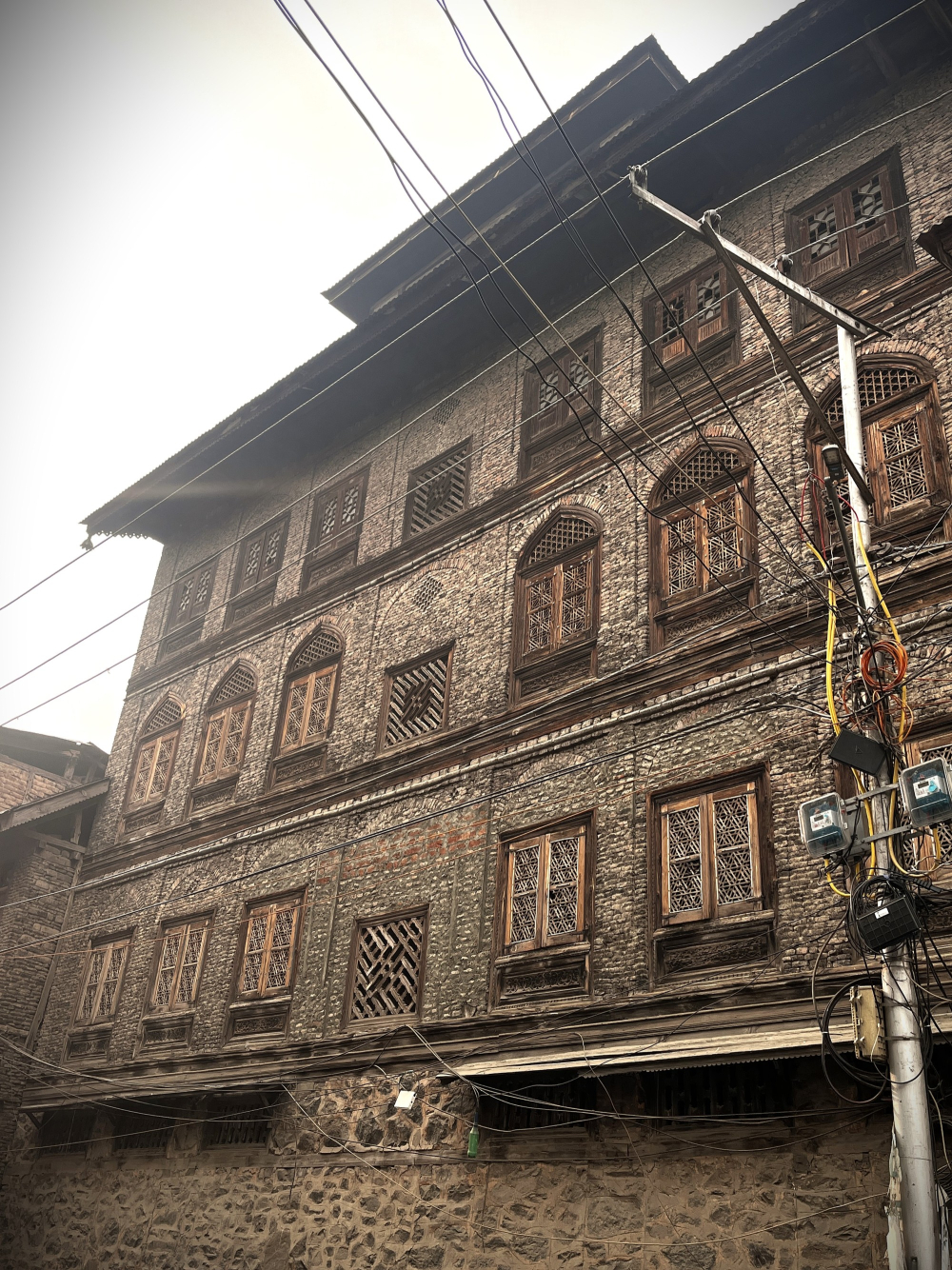
Traditional houses of Shehr-e-Khas, built with Maharaji bricks and timber framing. (Picture Credits: Taha Mughal)
Narrow alley in Srinagar’s Old City. (Picture Credits: Taha Mughal)
Mr Majeed Bhat, a resident of Shehr-e-Khas, shares: ‘Growing up, I always remember in the winter months we used to spend our days in the carpet-making karkhana. The hand-written taleems on scrolls of brown paper strewn across the looms and radio playing in the background. My father used to say winters are for hibernating and staying indoors—to create and to perfect your craft. Unfortunately, I did not take up the craft due to personal reasons, but my childhood memories remain strong to this day. It’s sad to see our crafts taking a back seat day by day. Modernisation will consume these traditions’ This reflection underscores the intimate relationship between craft, community and memory in Shehr-e-Khas, highlighting the need to preserve these invaluable traditions for future generations.
One of the most iconic features of Kashmiri architecture is dhajji dewari, a timber framework filled with brick, allowing the structure flexibility—a necessary adaptation given the region’s seismic activity. Zoon Daeb (overhanging enclosed balconies) and large lattice windows add to the building’s aesthetic while allowing light in and preserving privacy. These homes, usually multi-storeyed, are constructed using local materials such as wood, brick and stone, creating harmony with Kashmir’s natural surroundings. Each house is designed to withstand seasonal changes, with thick walls to retain heat in winter and inner courtyards to allow cooling in summer.
The Role of the Jhelum River and Ghats
The Jehlum or Jhelum River has shaped the physical and cultural landscape of Srinagar in many ways. Known historically as Vitasta, it has been a lifeline for the city’s development. Traditional homes along the river were built with elevated floors to protect against flooding and featured upper levels that offered views of the river and the Himalayas. The riverfront ghats (yarbal), or stepped embankments along the river, were once bustling with activity, serving as spaces for trade, transport and cultural gatherings. Artisans often set up workshops along the river, using its waters to transport their goods. The riverfront was more than a commercial hub; it was also a communal space for interaction and celebration.
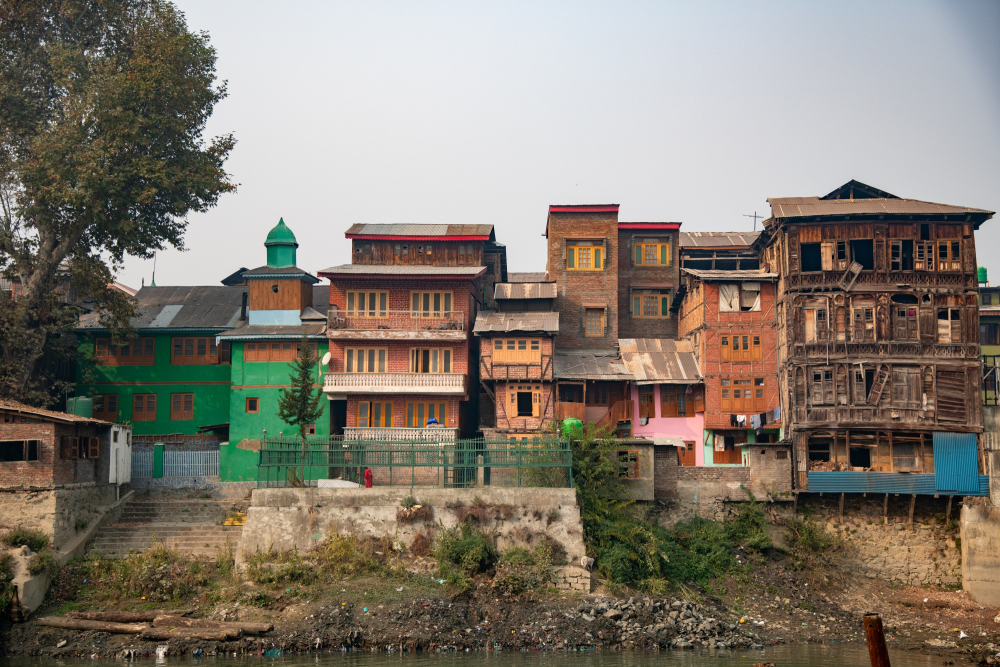
Traditional homes along the Jhelum River (Vitasta), built with elevated floors to guard against flooding. (Picture Credits: Syed Muneeb Masoodi)
Spiritual and Cultural Monuments
Srinagar is dotted with shrines of Sufi saints, such as the shrine of Hazrat Sheikh Hamza Makhdoom (Makhdoom Sahib), which stand as powerful memory sites in the Old City. These shrines are centres of spiritual gathering, particularly during Urs (death anniversary) celebrations, which become focal points for collective memory and spiritual reaffirmation. The Jamia Masjid and Khanqah-e-Moula, notable heritage structures, highlight Kashmiri craftsmanship with their grand wooden pillars and decorated ceilings. These religious buildings incorporate similar architectural features as traditional homes, including khatamband ceilings and intricate wood carvings.
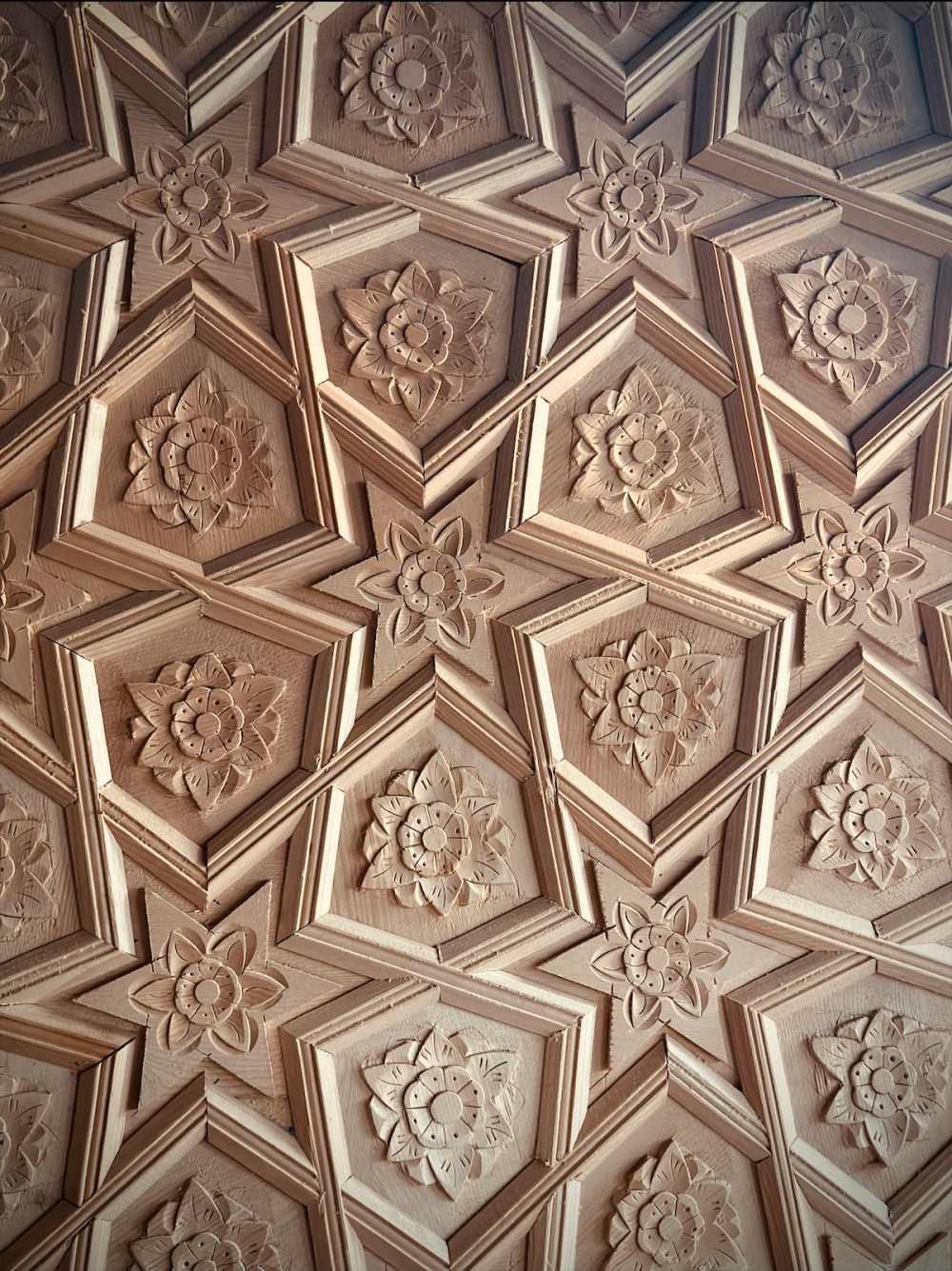
Khatambandh—intricate hand-crafted wood paneling in traditional Kashmiri architecture. (Picture Credits: Syed Muneeb Masoodi)
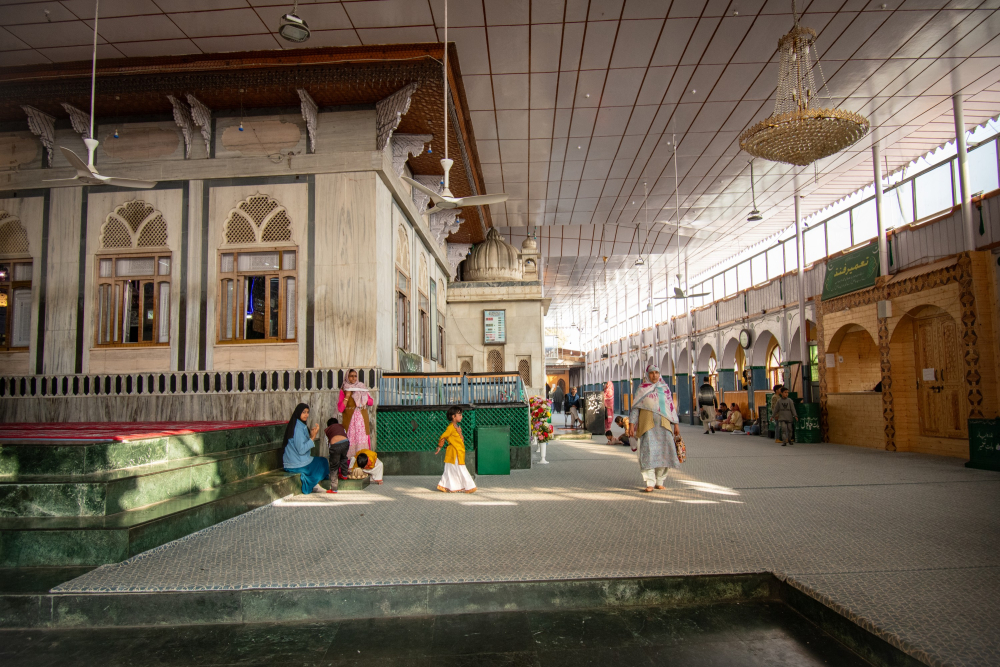
Interiors of the Sufi shrine of Makhdoom Sahib. Photo by Syed Muneeb Masoodi. (Picture Credits: Syed Muneeb Masoodi)
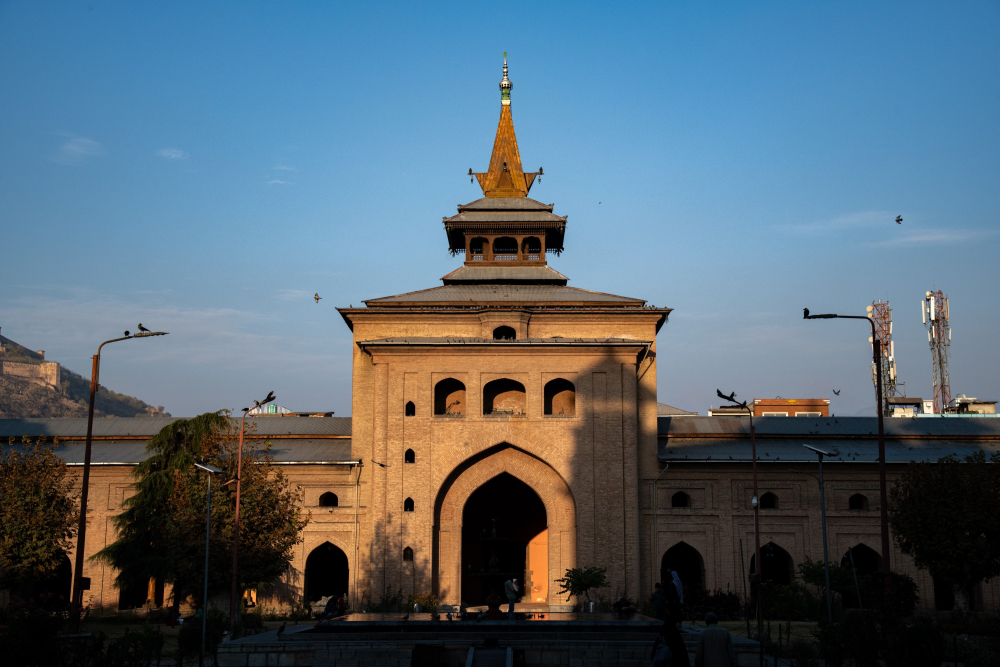
Jamia Masjid. (Picture Credits: Syed Muneeb Masoodi)

Interiors of Jamia Masjid, featuring grand wooden pillars showcasing Kashmiri craftsmanship. (Picture Credits: Syed Muneeb Masoodi)
The Multisensory Experience of Shehr-e-Khas
Shehr-e-Khas is not merely a relic of Kashmir’s past but a living entity, a space where architecture, memory and community converge to create an atmosphere that is both historic and contemporary. In Peter Zumthor’s framework, architecture is about creating atmospheres that engage all senses, and Shehr-e-Khas is a quintessential example. The materiality of the Old City—from Maharaji bricks to timber framing—offers a tactile journey through its streets.
Walking down Srinagar’s narrow lanes, residents and visitors alike experience the contrast of the cool smoothness of bricks alongside the warmth of timber. The visual experience of the city is defined by the interplay of light and shadow within the narrow streets, creating fragmented views and a sense of discovery with each turn. The latticework windows, traditional balconies and overhanging daeb offer glimpses of hidden courtyards and gardens. Sound is equally integral to Shehr-e-Khas. The sounds of daily life, the call to prayer, footsteps on cobbled streets and the murmur of the Jehlum River compose a rhythm that defines the city’s atmosphere. This sensory experience heightens one’s connection to their environment, embodying the cultural memory and historical continuity of Old Srinagar.
Cultural Continuity and Challenges in Preservation
Today, the future of Srinagar’s traditional architecture stands at a crossroads. Modernisation, urban expansion and socio-economic pressures challenge the survival of these structures. Walking through Shehr-e-Khas, one encounters time-worn buildings struggling to maintain their place in the contemporary cityscape. As the city is growing, the mohalla system, once the backbone of community life, is being replaced by modern housing developments that favour economy and density over cultural heritage. Perhaps more concerning is the steady erosion of traditional craftsmanship as younger generations, seeking financial security, are turning away from ancestral trades towards contemporary careers. This shift not only threatens the survival of traditional arts and crafts but risks severing the chain of knowledge passed down through generations.
However, in recent times, efforts to preserve heritage have been initiated, with projects to restore the Jhelum riverfront and conserve key buildings.
Shehr-e-Khas as a Living Heritage
Old City Srinagar offers a rich, multisensory understanding of space that goes beyond architecture and urban planning. It is about how the city’s residents live, feel and experience their environment in ways that are deeply rooted in memory, tradition and community. From the textures of wood and stone to the sounds of the river and mosques, from the social dynamics of the mohallas to the historical weight of time, Shehr-e-Khas remains a living heritage.
In Shehr-e-Khas, the heartbeat of Srinagar whispers through weathered bricks and whispered prayers; each lane a story, each ghat a sigh of the Jhelum. Here, homes cradle generations, their walls etched with the patience of wood, the resilience of stone, and the warmth of fire-lit rooms. Sunlight dances in latticed shadows, winding through narrow alleys, mingling with the sounds of morning calls and evening laments.
As time stretches its hands across Shehr-e-Khas, the city’s spirit flows like the river that embraces it—a river of memory, of craft, of voices that rise from the past and linger, each note echoing across the Valley. In this dance of tradition and change, Shehr-e-Khas stands not just as a monument but as a living poem of resilience and belonging, an ode to the timeless, woven into the very bones of the land.
This essay has been created as part of Sahapedia's My City My Heritage project, supported by the InterGlobe Foundation (IGF).


